
Ames, Iowa - An Iowa State University researcher restored a 7-year-old dog's deteriorating sight by removing its cloudy cornea and inserting a plastic replacement.

Ames, Iowa - An Iowa State University researcher restored a 7-year-old dog's deteriorating sight by removing its cloudy cornea and inserting a plastic replacement.
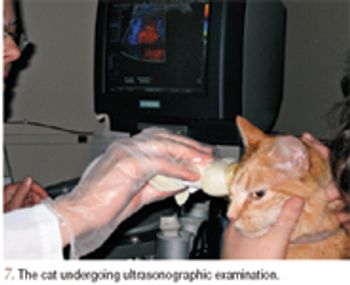
A 10-year-old 12-lb (5.5-kg) female spayed domestic shorthaired cat was presented to Colorado State University's Veterinary Medical Center for evaluation of a protruding nictitating membrane of the right eye.

Ames, Iowa - An Iowa State University researcher restored a 7-year-old dog's deteriorating sight by removing its cloudy cornea and inserting a plastic replacement.

Ames, Iowa- A previously unknown eye disease that can cause canine blindness has been discovered and named at Iowa State University.

It is important to recognize qualities that affect candidacy for cataract surgery in our small animal patients.

During this talk, we will be discussing currently available medical and surgical therapies for glaucoma in veterinary medicine, with emphasis on what is new and updated, as well as when their use is appropriate.

Uveitis is inflammation of part or all of the uvea; the uveal tract is composed of the iris, the ciliary body and the choroid.

"How well can my pet see?" is a common question pet owners pose to veterinarians.

Orbital disease can be a challenge to diagnose and treat appropriately.

How to conduct a direct fundic exam.

An emergency involves anything that is vision-threatening and/or painful for the patient.

Indications of a full thickness eyelid wedge resection include mass, tumor and entropion/ectropion.

The importance of a reliable and accurate history that is relevant to the presentation at your examination cannot be overemphasized.

History, ocular surface diagnostics, tonometry, culture and sensitivity, cytology, biopsy, ERG, ultrasound

Eyelids cover and protect the globe, remove debris by blinking, and spread the tear film, and the eyelid margins contain the meibomian glands.

Degree of penetration of topically applied medications depends on integrity of normal defense mechanisms of the eye.
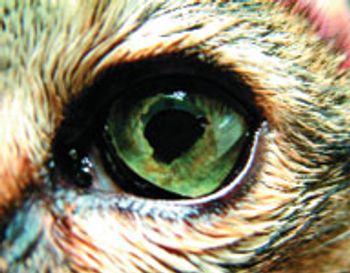
A 9-year-old male neutered domestic shorthaired cat was referred to The Veterinary Eye Clinic in Wheat Ridge, Colo., for evaluation of acute, progressive uveitis in both eyes and glaucoma in the right eye.

New ocular pharmacologic agents or new uses for familiar products are discovered every year. This article discusses a select few of these newer therapies in veterinary ophthalmology.
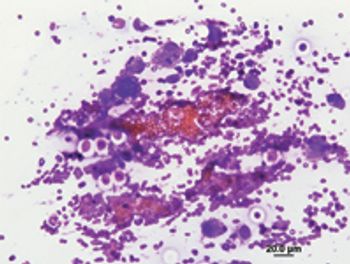
A 12-year-old 8-lb (3.6-kg) castrated male domestic shorthaired cat was evaluated initially at Bissonnet/Southampton Veterinary Clinic followed by evaluation at Gulf Coast Animal Eye Clinic and Gulf Coast Veterinary Specialists for blindness of one month's duration.
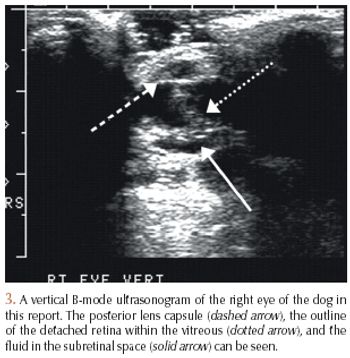
A 12-year-old 57-lb (26-kg) castrated male Siberian husky was presented to the Colorado State University Veterinary Teaching Hospital for evaluation of blindness of three weeks' duration, depression, and polydipsia.

Columbia, Mo. - A University of Missouri (MU) veterinary ophthalmologist hopes continued research and advancement in eye-implantation technology will one day end retinal blindness for companion animals and humans.

Madison, Wis. - A study conducted by a University of Madison-Wisconsin veterinary ophthalmologist showed an increase in intra-ocular pressure (IOP) in dogs while pulling on a collar, confirming a correlation between glaucoma and collar stress.
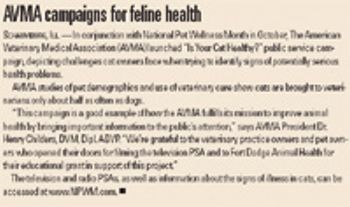
Diabetes mellitus leads to cataracts in dogs via the sorbitol pathway, which is activated in hyperglycemia.
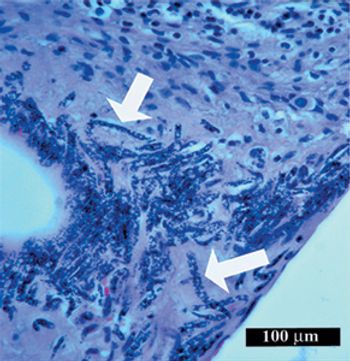
A middle-aged 48.5-lb (22-kg) spayed female Border collie mix was presented to the Colorado State University Veterinary Teaching Hospital for evaluation of a red, weepy left eye.

Carefully evaluating the pupillary light reflex (PLR), both direct and indirect (consensual), is critical when assessing the prognosis for vision, particularly in patients with glaucoma. So properly performing this quick and easy evaluation is essential.